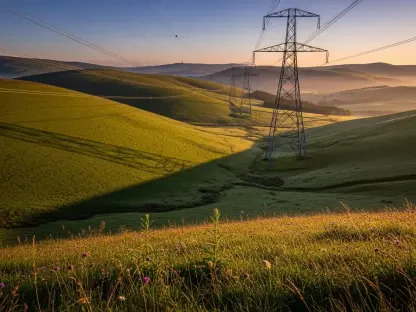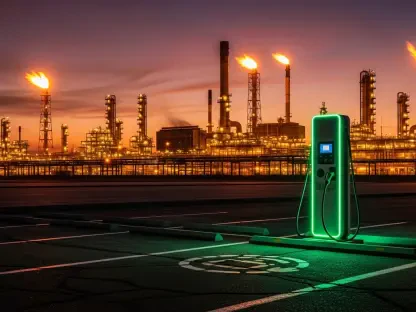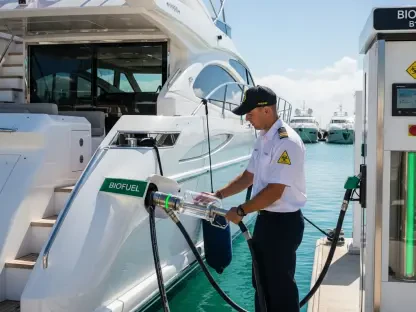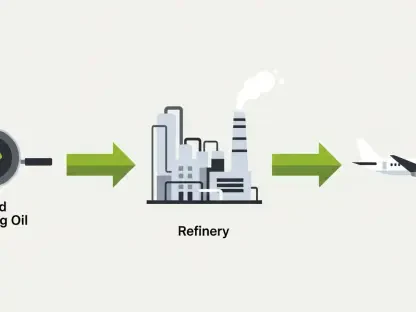In a conversation with Christopher Hailstone, an expert in energy management and grid reliability, we delve into the Guri Project’s impact on Venezuela’s energy sector, its challenges and benefits, and what lessons it might offer for other nations pursuing renewable energy solutions.
What is the significant role of the Guri Project in Venezuela’s energy sector?
The Guri Project plays a monumental role in Venezuela’s energy sector by supplying approximately 73% of the country’s electricity needs. The sheer volume of power generated here marks it as a critical component of the nation’s infrastructure, supporting both residential and industrial demands. This facility has essentially transformed the nation’s dependency on fossil fuels, becoming the cornerstone of Venezuela’s shift towards cleaner energy solutions.
Can you explain the initial goals of the Simón Bolívar Hydroelectric Station when it was first developed?
The primary aim of the Simón Bolívar Hydroelectric Station was to reduce Venezuela’s reliance on fossil fuels. By constructing a dam on the Caroní River, the project sought to harness hydropower as a clean and renewable energy source. This decision was driven by the desire to achieve energy security and sustainability, and it was envisioned to support the country’s long-term energy needs.
How has the electrical capacity of the Guri Project evolved from its initial stage to its current state?
The Guri Project has seen substantial evolution in its electrical capacity. Initially, it delivered around 2,065 MW from ten generators when the first stage was completed in 1976. The subsequent stage, which wrapped up in 1986, involved adding ten more turbines, pushing the output to 10,200 MW. This transformation has established the Guri Project as one of the world’s most powerful hydroelectric stations.
What are the primary benefits of constructing the dam on the Caroní River, aside from power generation?
Beyond its impressive power generation capabilities, the dam offers other important benefits. It aids in flood control and water management across the Caroní basin, helping to protect the region’s infrastructure and agriculture. Moreover, the stored water provides support for local communities, enhancing quality of life through improved water availability.
How does the Guri Hydroelectric Power Plant manage to supply electricity to approximately three-quarters of Venezuela’s grid?
The plant’s ability to supply such a vast portion of Venezuela’s grid is largely due to its gigantic capacity and advanced engineering. The vast amount of water channeled from the Caroní River enables efficient electricity generation on a large scale. Furthermore, its strategic location and integration into the national power distribution network facilitate widespread coverage.
What challenges has the Guri Power Plant faced due to droughts and infrastructure failures?
The Guri Power Plant has encountered persistent challenges from periodic droughts, which lower water levels in the reservoir and lead to power outages. Infrastructure failures, such as the notable incident at the San Gerónimo B substation, also pose threats to its reliability. These disruptions highlight vulnerabilities that require ongoing attention and maintenance.
How do these challenges, such as droughts, affect the overall energy security in Venezuela?
Droughts and infrastructure shortcomings significantly threaten Venezuela’s energy security by causing prolonged interruptions in electricity supply. Such events can destabilize the grid, resulting in economic repercussions and impacting everyday life. These challenges underscore the need for diversification and modernization in the country’s energy strategies.
In what ways was the Guri Project modernized to extend its operational life by 30 years?
Efforts to modernize the Guri Project included technological upgrades such as the installation of new Francis turbines and improved generators. A concerted effort was made to enhance control and monitoring systems, including the implementation of an Industrial Video and Control system equipped with leak detection features. These advancements aimed to bolster efficiency and reliability.
What role did technological advancements, such as the Industrial Video and Control (IVC) system, play in the modernization process?
Technological advancements like the IVC system have been crucial in modernizing the Guri facility. By enabling real-time monitoring and quick response to potential issues through leak detection, the system enhances operational efficiency and minimizes downtime. This contributes to the plant’s ability to consistently deliver power and extend its operational life.
Despite its significance, what pressures does Venezuela’s energy grid still face today?
Venezuela’s energy grid faces significant pressures due to political instability, economic challenges, and the fragility of its infrastructure. Supply-demand mismatch during peak hours also stresses the grid, while the heavy reliance on one source—namely, the Guri Project—limits adaptability in times of crisis. Future investments and reforms are essential to stabilize the situation.
How does the Guri plant’s flow rate contribute to its effectiveness in powering the nation?
The Guri plant boasts an impressive flow rate of more than 27 million liters per second, a factor crucial to its effectiveness. This massive volume allows for the generation of substantial amounts of electricity, supporting the national grid extensively. The flow rate ensures the plant operates at optimal capacity to meet the energy demands of the entire country.
What lessons or inspiration might America take from Venezuela’s example in using hydropower as a clean energy source?
America can certainly take lessons in scalability and impact from Venezuela’s example, recognizing hydropower’s potential not just as a clean energy source but also in economic and infrastructural benefits. Considering diversification strategies and embracing the hydropower model could support America’s sustainable energy journey and augment its existing green initiatives.
How does the Guri Project compare to traditional oil-based energy solutions in terms of long-term sustainability?
In terms of sustainability, the Guri Project surpasses oil-based solutions by leveraging a renewable resource—water—thus reducing environmental impact. Unlike fossil fuels, hydropower does not deplete resources or contribute significantly to greenhouse gas emissions. Such longevity and lower ecological footprint highlight its advantages over traditional approaches.
Given Venezuela’s reliance on the Guri Project, how crucial is it for the country to diversify its energy sources?
Diversification is vital for Venezuela to mitigate risks associated with heavy reliance on a single energy source. Expanding into other renewable options, like solar or wind, could bolster resilience against fluctuations in hydrological conditions and infrastructure vulnerabilities. A diverse energy mix would enhance security and stability for future generations.
What are the prospects for further developments or improvements at the Guri Hydroelectric Power Plant in the future?
Looking ahead, prospects for the Guri Power Plant could involve continued technological upgrades and infrastructure reinforcement to enhance efficiency and reliability. Investments in auxiliary facilities or alternative energy sources may further strengthen the plant’s operational capacity. Future initiatives might focus on integrating emerging technologies to optimize output and sustainability.









